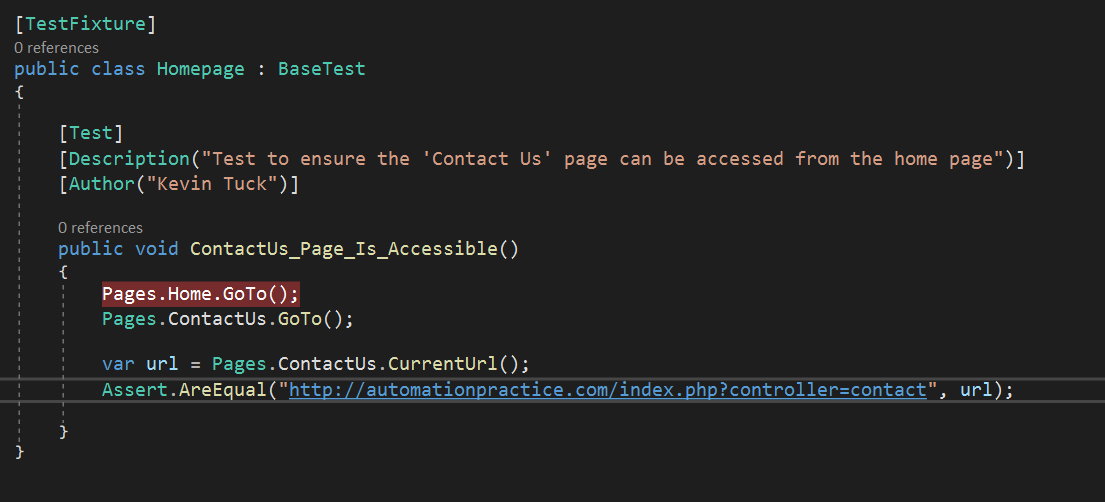POM framework is a framework for Selenium web driver which uses the page object model and allows test cases to be written in a language that reads just like English. This enables higher levels of collaboration between members of your team and allows for non-technical stakeholders the ability to easily read your tests and understand their intention.
Open up BaseTest.cs in Test > Base and change the arguments passed to the CreateBrowser function to Network.Local if you want to run a Selenium test on your local machine. Or Network.Global if you want to run a test on SauceLabs (You will need to ensure your credidentials are stored as environment variables for this to work. You can read instructions for doing this here). SauceLabs tests also currently only run via the latest version of Chrome. But this can be changed in the CreateSauceDriver within WebDriverFactory.cs.
Tests are writing using the Pages.<name>.<Action>notation. Create a new page buy creating a new class within PageObjects/. Making sure to create the associated mapping file (with lists the elements that are available to be interacted with on the page). Also be sure to populate the classes using the excisting pages as a reference. You will also need to edit Pages.cs with reference to the new page so that it gets instantiated.
Locating elements on the page is done in the same way as standard Selenium (using ID, Classes etc as selectors). But instead of writing driver.FindElement(By.Id("foo")); you simply rely on the included Helper class and type Helper.LocateElement(Locators.ID, "foo");.
There are also additional Helper methods included for retrieving the current pages url, Navigating to a specific url and highlighting page elements.

